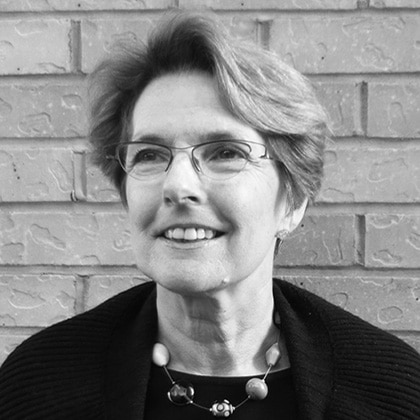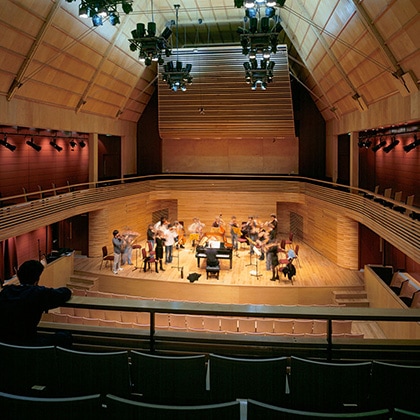
Anne Minors, founding director of theater consultancy Sound Space Vision, is one of the UK’s most respected theater consultants. She combined her training as an architect with her love of performance spaces and stage lighting when she joined Theatre Projects Consultants in 1984, and throughout her career, her considerable skills and deep understanding of performance have contributed to the development of world-class venues across the globe. She has delivered outstanding designs for clients at every level, from small school theaters to prestigious opera houses and national showpiece performing arts complexes.
How did you first become involved with performance technology?
My interest began through performing drama at school, playing in orchestras and singing in choirs where the lighting was always a fascination.
What was your route to becoming a performance technology consultant?
I joined Theatre Projects Consultants in the mid-1980s as an architect. I’d heard about them from my architect friend who worked for RHWL and thought TPC would suit my passion for music, performance, and buildings – she was right!
How long have you been doing what you do?
I’ve been doing this for 36 years now.
If you hadn’t become a consultant, what do you think you’d be doing instead?
I was signed up to do Physics, Maths, and Music A levels in order to join the newly-formed Tonnmeister course at Surrey University. Then I met an architect and learned more about what architecture entailed and it sounded like a more definitive career, so I swapped Music for Art. If I had remained on the first path, I would be a sound engineer.
If someone asks you what you do for a living, how do you describe it?
I design performing arts buildings and make communication within them better. Our company specializes in the auditorium design and the specification of the lighting, sound, and rigging within spaces as well as the acoustics.
Can you outline the variety of the projects you undertake?
Historically, anywhere where people gather – for music, theatre, opera, education, worship, justice, and events. In the time of COVID-19, this message is nuanced to be supporting the making and communication of music, theatre, opera, education, worship, justice, and events.
What do you most enjoy about the process of your work?
Just as being an orchestral member is contributing to something that is greater than the sum of the parts, so with building design teams. Resolving details that work for all the disciplines and have an interactivity that could only have resulted from understanding others’ perspectives and priorities is very satisfying.
What are the most challenging aspects of your work?
Getting the right minds concentrating on the same subject at the same time.
What would you say are the key elements of a successful project?
Understanding the client brief; knowing what matters to both the client and the architect; respecting the budget – that means everyone!
What are the key skills or attributes that you require to do your job well?
It’s essential to be a good listener, ask the right questions, and have a direction of travel for the design.
What are the most common misconceptions that you encounter among clients?
The best clients are highly involved, ask lots of questions and know what they are looking for. By working with them we help them achieve their vision.
Which piece of advice do you give to clients most often?
Usually advice is in the form of getting the best value for their budget, depending on their priorities.
What is the most frustrating aspect of your job?
The length of time it takes from designing the building to getting it built - and the reviewing of technological changes in the meantime.
Can you tell us something about being a consultant that most people don’t realize?
We are dealing with the whole worldwide picture – the arts industry, the building industry, building techniques anywhere in the world, and at the same time, focusing in on the intricate details of loads, motors, circuits, cables, plugs, rail details, seating ergonomics, and sound balance. Every day is very varied and never dull!
Which types of projects do you find the most rewarding?
The most rewarding projects are the ones where people care; ones where the physical outcome is beyond the client’s wildest imagination. I have, in turn, been thrilled by the creativity of production teams using space or equipment in a building we have designed in a way we had not imagined.
Which of your projects have you found most satisfying, and why?
It’s always satisfying to deliver a performance building which raises the standard of creative work within it and which provides a step-change for the client organization. Examples include Menuhin Hall at The Yehudi Menuhin School, the Bishop Centre at Godolphin, and Latymer School and Nevill Holt Opera.
Satisfaction also comes from making a place or activity more accessible, physically and artistically, to all. For example, seeing people independently accessing all floors of a refurbished Covent Garden and Glyndebourne Opera; reading of eminent musicians’ delight at performing in the Koerner Hall, Toronto; watching 46 different ethnicities demonstrate their dancing skills on the new stage in Astana, Kazakhstan; a 2300 Turkish audience warmly greet their world-famous musicians in the Zorlu Centre; seeing a young child being engaged and transformed by the performers on stage at the Egg Children and Young People’s Theatre, Bath.
How do you keep yourself appraised of new technology and potential solutions?
All the usual ways – trade shows, meetings, websites, discussion with colleagues. If we have thoughts and ideas, we try to share them with manufacturers.
How has clients’ awareness of LED lighting technology changed in recent years?
As LED becomes more affordable it becomes more ubiquitous. Not all clients are aware of the noise issues with some LED lights and the need for fans, even in non-moving lights.
What are the biggest changes you’ve witnessed in equipment and system specifications in recent years?
There is more thought about intermediate phases of development – where a venue has to accommodate both conventional lights and dimming as well as LED. Making LED luminaires more affordable for the education market has helped smaller projects with tighter budgets.
There is also more interest from architectural lighting designers and engineers to use DMX protocols compared to DALI for dimming, which is helpful.
How important is it for you to have a close working relationship with the equipment manufacturer’s representatives?
Very important.
Solutions-wise, what is missing in the marketplace?
A light that gives warmth, punch, and sparkle from a distance.
What would you most like to see from manufacturers?
An objective and accurate view of the embodied energy costs of manufacturing performance lights, including the use of rare metals and how we minimize these going forward.



